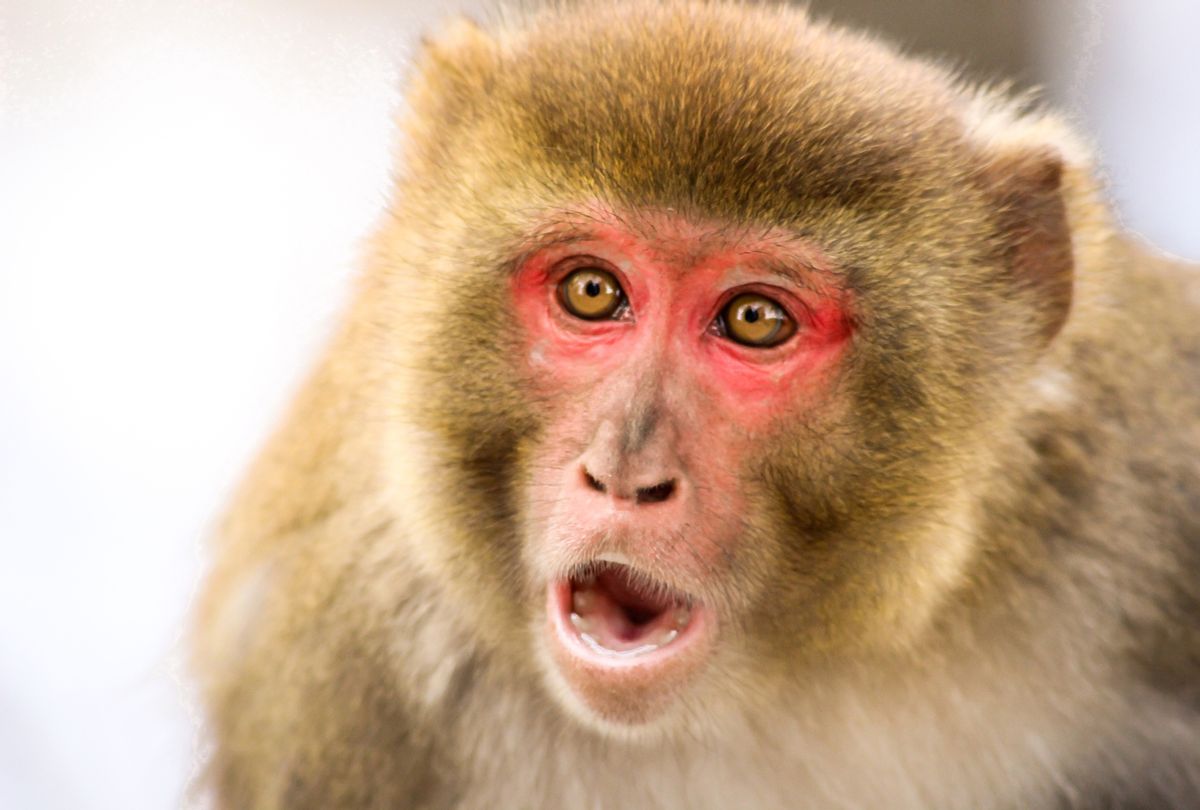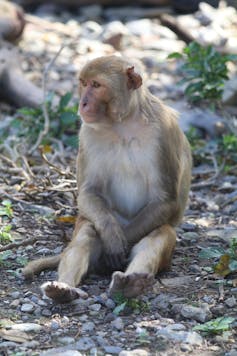"Spanking the monkey", "petting the poodle" and "pulling the python": all fitting euphemisms for masturbation, and closer to the truth than you might imagine. Self-pleasure is common across the animal kingdom: from dogs humping unwitting teddy bears to dolphins thrusting their penises into decapitated fish (yes, really), animal masturbation is a raucous affair.
In my team's new paper, my colleagues and I tested the hypotheses that primate masturbation could increase reproductive success and help avoid sexually transmitted infections (STIs).
We focused our research on primates (the group of animals humans belong to) because, if there were a prize for the most inventive onanists in the animal kingdom, they would win.
We discovered that masturbation is an ancient behavior within primates, and concluded that the ancestor of all monkeys and apes, including humans, probably masturbated.
Young chimpanzees fashion DIY sex toys from bits of chewed-up fruit. Female Sulawesi crested macaques slap their rumps while repeatedly inserting their fingers into their vaginas. In one study, captive male chacma baboons masturbated while ogling females sporting large prosthetic bottoms, attached by researchers to replicate the natural swellings females develop when at their most fertile.
Despite masturbation being such common behavior, there is very little research in this area. So – in a career move I did not anticipate when I was growing up – I spent my PhD researching the evolution of masturbation.
In evolutionary terms, masturbation is a puzzler because, by definition, it excludes reproductive partners and it's hard to think of a scenario in which masturbating could aid survival. Many people have dismissed it as an abnormal and deviant behavior, or a byproduct of sexual arousal. And masturbation can be costly in terms of both time and energy.
Mapping masturbation across the primate order
My colleagues and I started by compiling a "who's who" of masturbators across the primate order. We collated every detail we could find from published research, and supplemented this with questionnaires dutifully filled out by accommodating, if slightly bewildered, colleagues who are experienced working with primates.
Rhesus macaques often masturbate several times a day during the mating season. (Photo: Matilda Brindle)
If you know how different animals are related to one another, you can compare data from living species to infer how a trait may have evolved. We combined information on the evolutionary relationships between different primates (think of it like an extensive family tree) with our new data on their masturbatory behaviors (or lack thereof).
For some analyses, we added information on other traits, such as their mating system and whether the species typically had a high exposure to STIs.
It turns out that masturbation occurs in all age groups, in both females and males, in the wild and in captivity. We discovered that masturbation is an ancient behavior within primates, and concluded that the ancestor of all monkeys and apes, including humans, probably masturbated. It's unlikely masturbation is a habit that different species of monkeys and apes have picked up along the way.
Can masturbation increase reproductive success?
Previous research has shown that marine iguanas have an ingenious secret. Bigger males monopolize females, physically separating small males from their partner if they spot them copulating. To get around this, small males masturbate and store their ejaculate in a special pouch at the tip of their penis. Next time there's an opportunity to mate, they quickly deposit their pre-prepared ejaculate. Amazingly, this method improves small males' fertilization success by 41%.
Primates don't have a special pouch for storing semen, but getting aroused before sex is still a good strategy for low-ranking males, as they are likely to be interrupted by those at the top of the pecking order. Hovering close to orgasm means they can ejaculate faster if they do get the opportunity to mate, before making a speedy exit.
Male masturbation can also keep sperm fighting fit, since ejaculation allows males to replenish their semen with fresh, high-quality sperm that are more likely to outcompete those of other males.
Our study found support for the theory that masturbation increases male — but not female — reproductive success. Mating systems with lots of competition between males have co-evolved with masturbation across the course of evolution.
Previous studies have showed that arousal in females increases vaginal pH, creating a more welcoming environment for sperm, while vaginal mucus filters out inferior sperm and fast-tracks high-quality semen towards the uterus. Orgasmic contractions can also help sperm on their journey.
Masturbation as a means of genital grooming
Male Cape ground squirrels masturbate after they've had sex — and the more partners they have, the more they do it. If their partner has had a lot of previous sex, they masturbate even more.
It's thought that, among males, this practice of ejaculating via masturbation after sex is a form of genital cleansing. It's unlikely that female masturbation evolved for STI prevention though, because the higher vaginal pH associated with arousal is more hospitable for pathogens as well as sperm.
Our research supports the hypothesis that masturbation can be a pathogen avoidance strategy in males, having co-evolved with higher risk of STIs. And in species with a high risk of contracting an STI, once masturbation evolved it was maintained.
So what about females?
Our research highlights how masturbation is a normal part of the behavioral repertoire of many different species – both in females and males, in the wild and in captivity.
At first glance, our data seems to suggest that female masturbation is less prevalent than its male counterpart. We didn't find evidence for an evolutionary function of female masturbation.
However, I'm not convinced these results reflect what's really going on. This is in part because female arousal and masturbation are often far less obvious than in males. But it also reflects a broader trend in the sciences — a shocking lack of information on female sexual behavior and anatomy.
In the past, females have been pushed to the side in favor of research on males, which has the benefit of a back-catalogue of previous scientific effort. We set out to explore the evolution of masturbation in both females and males, but our analyses of females were hampered because we couldn't collect as much data.
Our research highlights how masturbation is a normal part of the behavioral repertoire of many different species – both in females and males, in the wild and in captivity. Those who condemn masturbation as unnatural or wrong should have a look at our primate cousins, and take a walk on the wild side.
This article is republished from The Conversation under a Creative Commons license. Read the original article.


Shares